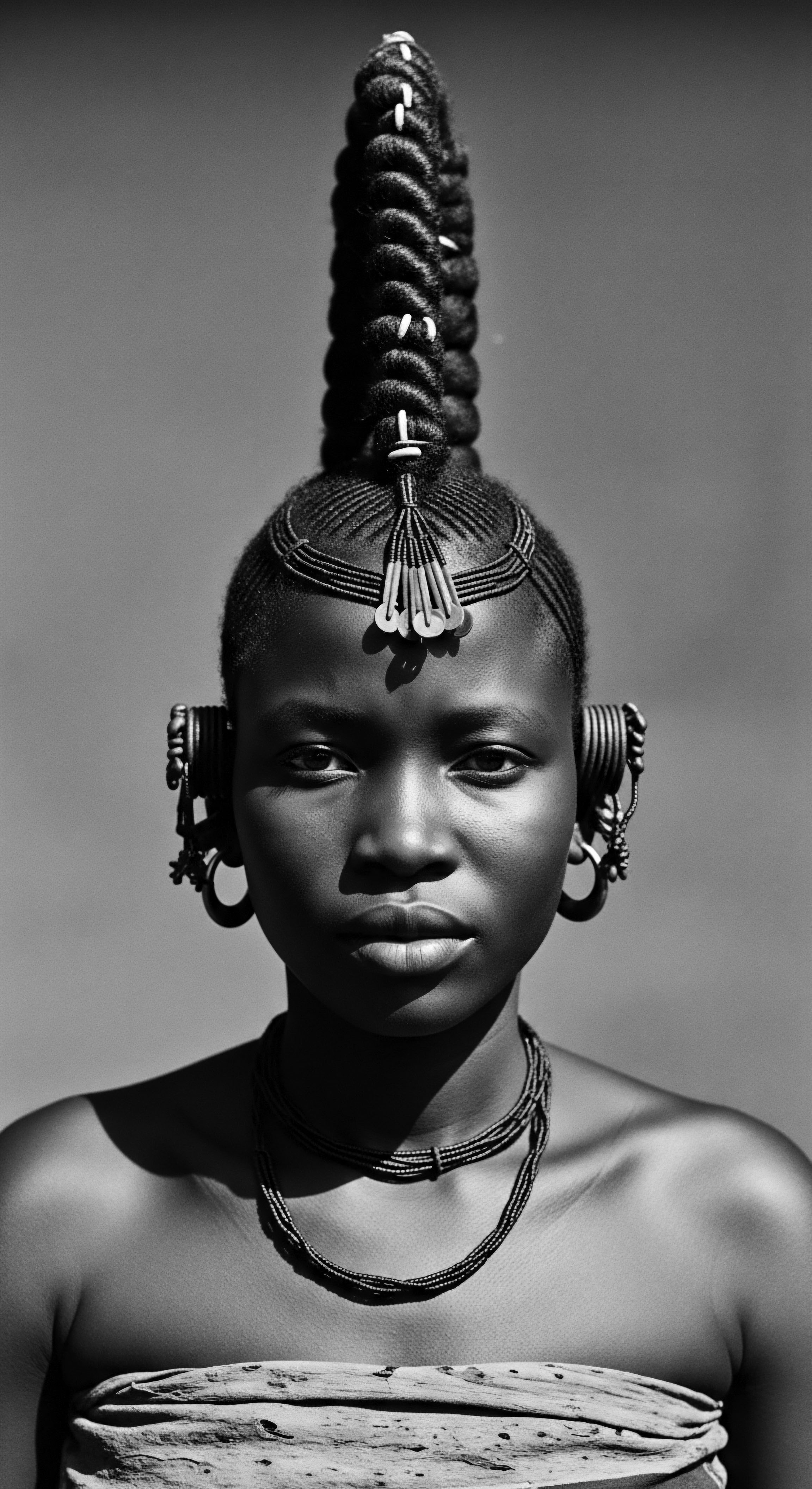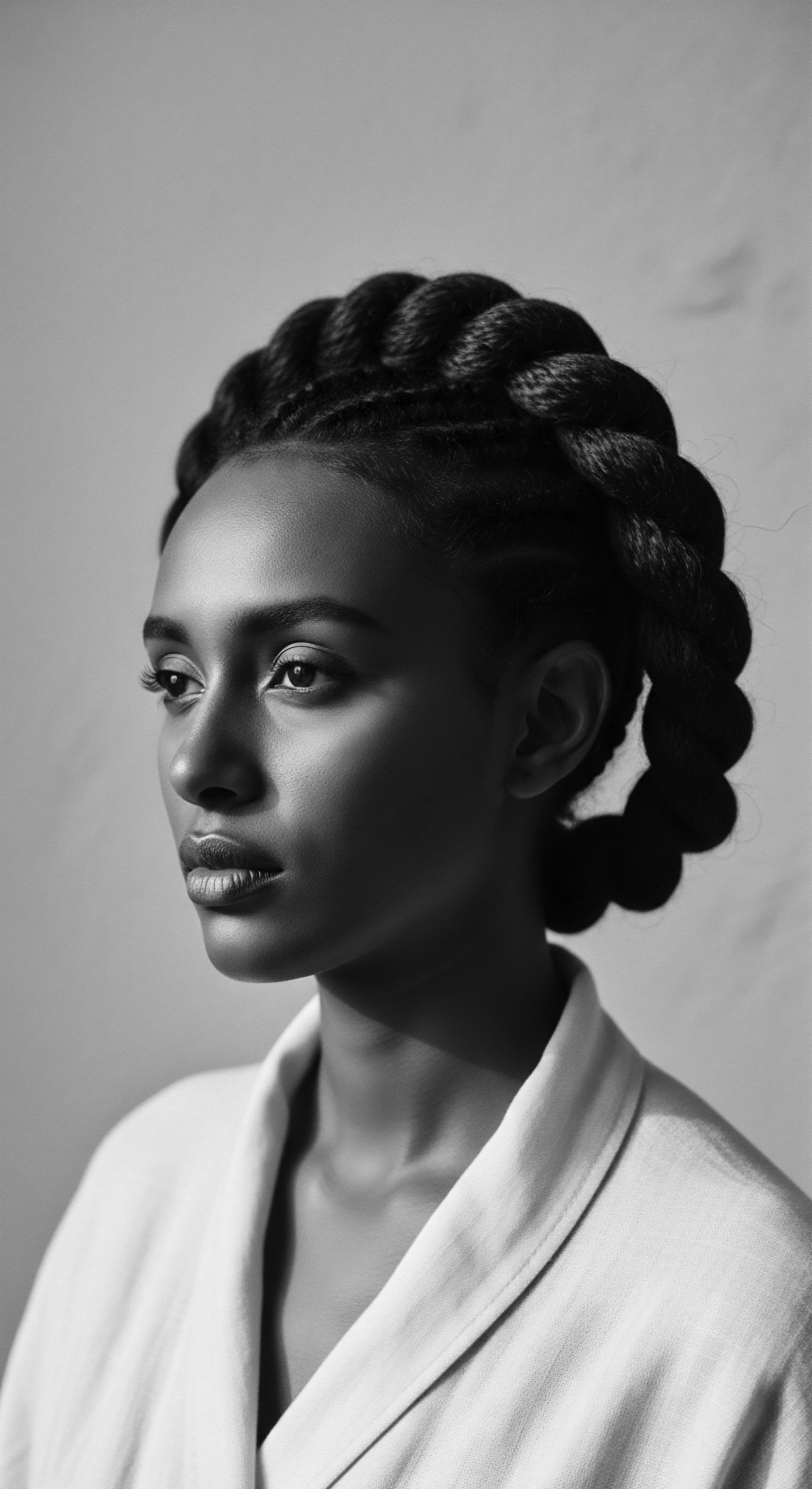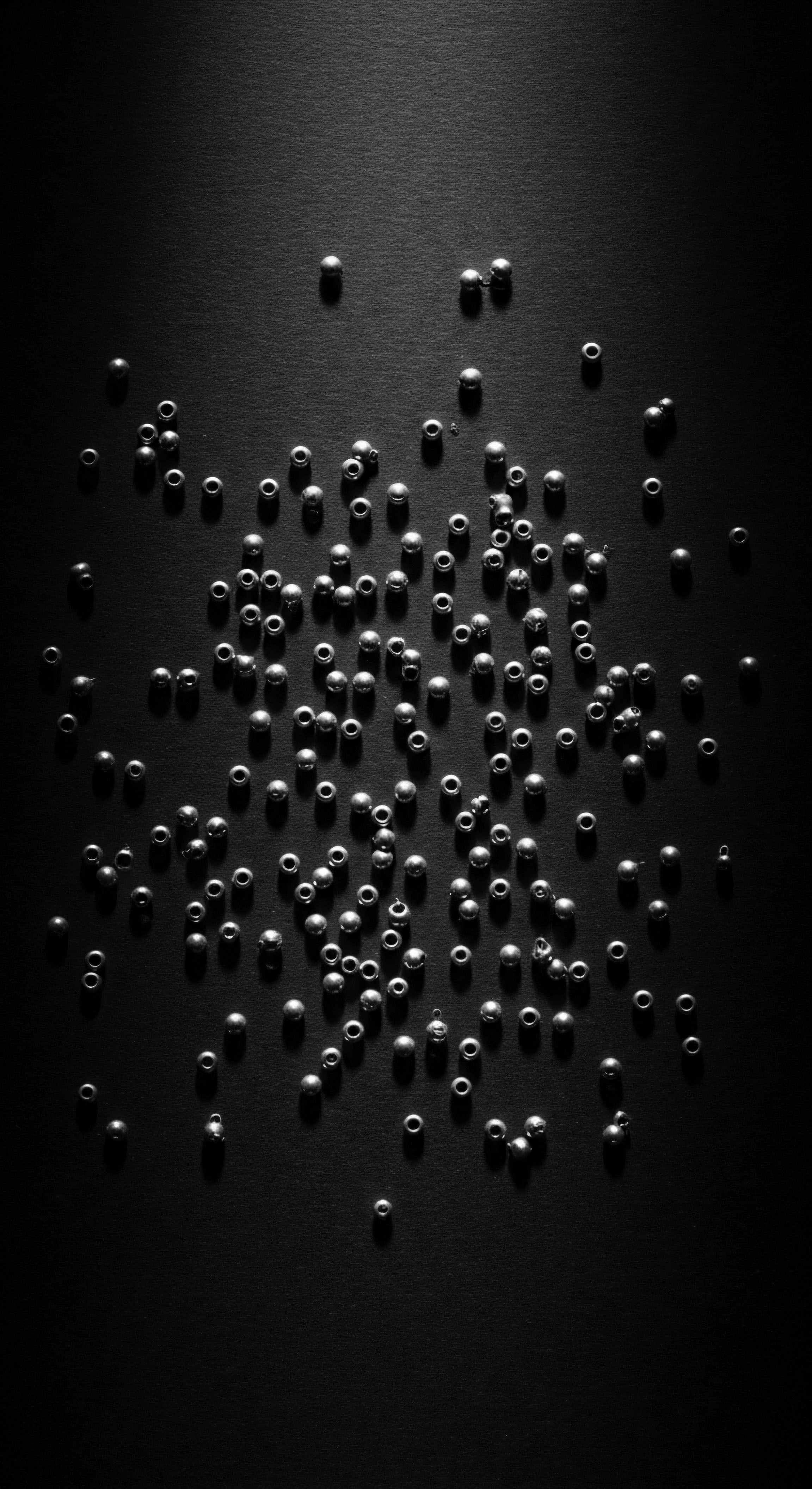
Roots
Across generations, from the sun-drenched savannas to the bustling metropolises, the textured strand has carried stories. It is a living archive, etched with the resilience and ingenuity of ancestors. For those whose lineage traces back to the vibrant continent of Africa and its global diaspora, hair has always been far more than mere adornment. It has served as a profound marker of identity, status, spirituality, and even a secret language.
The very act of caring for this hair, especially its moisture, links us directly to ancient practices, to the wisdom of elders who intuitively understood what modern science now confirms. How oils support moisture retention in textured hair is not a new query; it echoes from the source, from hands that have always known its whispered secrets.

The Intricate Architecture of Textured Hair
To truly grasp the role of oils, one must first look at the hair itself. Textured hair, spanning a vast spectrum of curls, coils, and kinks, possesses a unique anatomical blueprint. Unlike straight hair, which generally presents a more circular cross-section, textured strands often reveal an elliptical or flattened shape. This structural distinction causes the hair to bend and twist upon itself, creating the characteristic curl pattern.
With each bend, the hair’s outermost layer, the cuticle, lifts slightly. Think of the cuticle as a shingled roof; on straight hair, the shingles lay flat, providing a smooth, continuous surface. On textured hair, these shingles are subtly raised at each curve, making the strand inherently more porous and thus, more susceptible to moisture loss. This inherent openness means that textured hair requires a deliberate, mindful approach to hydration. Its ancestral environments, often arid or humid with drying winds, necessitated a deep understanding of natural emollients.
The density of melanin within textured hair also plays a part. While melanin provides natural UV protection, the very process of its distribution within the hair shaft can influence structural integrity and, by extension, moisture retention. The natural oils produced by the scalp, known as sebum, travel down the hair shaft. For straight hair, this journey is unimpeded, allowing sebum to coat the entire strand with relative ease.
For coily and kinky textures, however, the path of sebum is a winding road, often preventing it from reaching the ends. This phenomenon leaves the hair further predisposed to dryness, making external application of nourishing substances not merely beneficial but historically essential.
Understanding the unique structure of textured hair, with its inherent porosity and winding journey for natural oils, clarifies why external moisture support has always been a cornerstone of its care.

Ancestral Understanding of Hair’s Needs
Long before microscopes revealed the intricate architecture of hair follicles, African and diasporic communities possessed an innate, profound understanding of hair’s fundamental needs. This knowledge, passed down through oral traditions, observation, and communal practices, centered on the hair’s thirst for hydration. Ancestors recognized that hair, like skin, needed protection from the sun, wind, and environmental stressors.
They understood that certain plant-derived substances—butters, oils, and herbal concoctions—offered the shield and sustenance required. This ancestral wisdom formed the earliest ‘science’ of textured hair care, validating the effectiveness of ingredients generations before laboratories could quantify their properties.
- Shea Butter ❉ From the karite tree of West Africa, shea butter (Butyrospermum parkii) stands as a testament to ancestral ingenuity. Its creamy consistency and occlusive properties were instinctively recognized for sealing moisture into hair strands, protecting them from the harsh sun and dry winds.
- Palm Oil ❉ A historically significant ingredient in West and Central Africa, palm oil (Elaeis guineensis) served not only as a culinary staple but also as a traditional hair conditioner, valued for its emollient qualities.
- Coconut Oil ❉ Across coastal African and Afro-Caribbean communities, the abundant coconut (Cocos nucifera) provided a lightweight, penetrating oil. Its natural affinity for hair proteins made it a prized substance for conditioning and strengthening.

Ritual
The application of oils to textured hair moved beyond simple utility; it transformed into ritual. This was a communal act, often performed by mothers, aunties, and grandmothers, symbolizing care, bonding, and the transmission of heritage. The rhythmic massage of the scalp, the careful sectioning of hair, and the consistent application of plant-derived emollients became a language of love, a tender thread connecting past to present.
These hair rituals, steeped in tradition, influenced and shaped every aspect of styling, from protective braiding to intricate adornment. The very act of hair preparation with oils became a foundational step, ensuring the longevity and integrity of these cultural expressions.

How Do Oils Physically Support Moisture Retention in Textured Hair?
Oils support moisture retention in textured hair through several mechanisms, acting as both guardians and nurturers. Their molecular structure allows them to interact with the hair shaft in distinct ways. Some oils possess the ability to penetrate the hair cuticle, reaching the cortex, while others primarily form a protective layer on the strand’s surface.
This duality is critical for textured hair, which, as previously explored, struggles with inherent moisture loss. Penetrating oils help to fortify the hair from within, while coating oils act as a seal, slowing down evaporation.
The primary mechanism of moisture retention involves the creation of a hydrophobic (water-repelling) barrier. Textured hair thrives on water-based hydration. Water provides the pliability and elasticity necessary for the curls to coil and stretch without breaking. Once water has been introduced to the hair, either through washing or a hydrating spray, oils can then be applied to ‘lock in’ this moisture.
They do this by forming a thin film around the hair shaft, reducing the rate at which water evaporates from the hair. This occlusive property is especially vital for the naturally drier nature of textured hair, which rapidly loses water to the surrounding environment. Without this protective barrier, the strands become brittle, prone to breakage, and less able to hold their shape or style.
Oils also contribute to the hair’s elasticity and pliability. When the hair is adequately moisturized, its protein bonds are more flexible, allowing the hair to stretch and return to its original state without snapping. Oils help maintain this internal moisture balance, thereby contributing to the hair’s overall strength and resilience. They reduce friction between strands, making detangling a gentler process, which in turn reduces mechanical damage that can further compromise the cuticle and lead to moisture loss.
Oils create a hydrophobic barrier on hair strands, sealing in vital water-based moisture and enhancing the hair’s elasticity and resilience against environmental stressors.

Traditional Practices and Oil’s Influence
The influence of oils extended deeply into traditional styling practices, becoming an indispensable part of creating and maintaining complex hairstyles. Ancient African societies developed intricate braiding and threading techniques, not only for aesthetic appeal but also for hair preservation. These styles could take hours, even days, to complete, and oils were used throughout the process to keep the hair supple, minimize breakage during manipulation, and ensure the finished style remained hydrated and lustrous for extended periods. The Himba women of Namibia, for example, have long coated their hair with a paste of red ochre, butterfat, and herbs, a practice that serves both a protective and aesthetic purpose, shielding strands from the harsh desert sun and sealing in moisture.
Consider the historical role of oils in protective styling. Styles like cornrows, Bantu knots, and various forms of locs and twists have ancient origins, serving to protect the hair from environmental damage and reduce daily manipulation. Oils were integral to their application, ensuring the hair remained pliable during braiding and twisting, and preventing the dryness that might otherwise compromise the integrity of these long-lasting styles.
| Traditional Practice Hair Threading ❉ An ancient West and Central African method using thread to stretch and protect hair. |
| Primary Oil Function Aided in maintaining natural oils, preventing excessive dryness during manipulation, and allowing airflow while locking in moisture. |
| Traditional Practice Protective Braiding ❉ Techniques like cornrows, twists, and locs, rooted in African heritage. |
| Primary Oil Function Helped soften hair for manipulation, minimized breakage during the braiding process, and sealed moisture for style longevity. |
| Traditional Practice Scalp Oiling & Massage ❉ A communal ritual across many African and South Asian cultures. |
| Primary Oil Function Nourished the scalp, stimulated blood circulation, and ensured moisture traveled down the hair shaft, especially for those with coily textures. |
| Traditional Practice Ancestral hair care consistently integrated oils, acknowledging their multifaceted benefits for both hair health and styling endurance. |

Relay
The wisdom passed down through generations, often through the communal act of hair care, represents a relay of vital knowledge. This enduring connection to heritage guides contemporary understanding of how oils support moisture retention in textured hair, bridging ancient practices with modern scientific inquiry. It highlights a continuous dialogue between the intuitive wisdom of our forebears and the analytical insights of today’s laboratories. The efficacy of traditional oils, once simply known through lived experience, now gains further validation, inviting a deeper, more informed appreciation for these ancestral gifts.

The Scientific Lense on Oil’s Action
From a scientific standpoint, oils function as emollients and occlusives, crucial for textured hair’s moisture retention. The outermost layer of the hair, the cuticle, comprises overlapping scales. When hair becomes dry, these scales can lift, creating avenues for moisture to escape. Oils work by smoothing down these cuticle scales, thereby creating a more cohesive surface that reduces water evaporation.
Different oils present varying molecular weights and compositions of fatty acids, influencing their ability to either penetrate the hair shaft or sit on its surface. For instance, smaller molecular weight oils, like Coconut Oil, have a unique ability to penetrate the hair cortex. This characteristic allows them to reduce protein loss, particularly during washing, and reinforce the hair’s internal structure, leading to improved strength and flexibility. Larger molecular weight oils, such as Jojoba Oil or Castor Oil, tend to remain on the surface, forming a protective barrier that seals in moisture.
This dual action—internal reinforcement and external sealing—is paramount for textured hair, which requires both deep conditioning and surface protection. The proper selection and layering of oils, a practice often learned through ancestral trial and error, now finds grounding in lipid chemistry.
The interaction of oils with the scalp’s microbiome is also gaining attention. A healthy scalp environment is a precondition for healthy hair growth and moisture regulation. Some oils possess antimicrobial or anti-inflammatory properties that can soothe irritation, balance sebum production, and support a balanced microenvironment. This holistic interaction, from follicle to tip, underscores the comprehensive approach to hair care that has long been a hallmark of traditional practices.

What Specific Historical Examples Illuminate Oil’s Enduring Heritage?
The legacy of oils in textured hair care is perhaps nowhere more vividly illustrated than in the story of Madam C.J. Walker, born Sarah Breedlove, a pioneering figure in Black hair care at the turn of the 20th century. Facing her own challenges with hair loss and scalp issues, Walker developed her signature product, “Madam C.J. Walker’s Wonderful Hair Grower.” This formulation, rooted in a blend of traditional ingredients like Petroleum Jelly, Coconut Oil, and Beeswax, was marketed not only for stimulating hair growth but also for conditioning the hair, making it more manageable and moisturized for styling.
Her work, which began with personal experience and ancestral wisdom, addressed a fundamental need within the Black community, providing solutions for hair health and styling that resonated deeply with the experiences of countless women. Walker’s innovative approach, which included training a network of agents to teach hair care methods, transformed the industry and empowered Black women economically, all while cementing the importance of nourishing oils in their hair regimens. (Bundles, 2001)
This historical example speaks volumes. It highlights how the necessity of moisture retention in textured hair, understood ancestrally, translated into entrepreneurial endeavors that shaped cultural practices and beauty standards within the diaspora. The continuity of using oils to address dryness, improve manageability, and promote overall hair health is a thread that runs unbroken from ancient times through periods of systemic oppression, right into the modern era of natural hair movements. These traditions were not merely about aesthetics; they were acts of resistance, self-preservation, and identity reclamation, with oils serving as silent, steadfast allies.
The entrepreneurial vision of Madam C.J. Walker, who built an empire on oil-infused hair treatments, exemplifies how ancestral knowledge of moisture retention became a foundation for Black hair care innovation and empowerment.

Traditional Ingredients and Their Contemporary Affirmation
Many oils revered in ancestral hair care are now subject to scientific investigation, which frequently affirms their traditional uses.
- Castor Oil ❉ A staple in Caribbean hair care, castor oil (Ricinus communis) has been historically used to promote hair thickness and growth. Its high content of ricinoleic acid is now recognized for its potential to improve scalp circulation, which supports hair follicles.
- Baobab Oil ❉ Extracted from the “Tree of Life” in Africa, baobab oil (Adansonia digitata) was traditionally valued for addressing dry, brittle hair. Modern analysis reveals its richness in omega fatty acids, providing intense hydration and aiding in repair.
- Marula Oil ❉ Native to Southern Africa, marula oil (Sclerocarya birrea) serves as a traditional skin and hair moisturizer. Its antioxidant properties and fatty acid profile contribute to its hydrating and protective qualities, as known by ancestral communities.
The continuity of these ingredients from ancient remedies to modern formulations underscores a powerful truth ❉ the intuitive wisdom of our ancestors often aligns with the discoveries of contemporary science. This ongoing relay of knowledge ensures that the heritage of textured hair care remains vibrant, adaptable, and perpetually relevant.

Reflection
The journey through the intricate world of oils and their role in moisture retention for textured hair leads us back to a singular, profound realization. This narrative is more than a discussion of chemical structures or application techniques. It is a chronicle of enduring legacy, a testament to the wisdom that has flowed through generations, connecting hands that kneaded plant butters in ancient villages to those who apply curated elixirs today. Textured hair, with its unique thirst and glorious complexity, stands as a living testament to resilience, adapting and thriving through climates and challenges, always sustained by the thoughtful application of nourishing oils.
The ‘Soul of a Strand’ whispers stories of ancestral ingenuity, of communities where hair care was a collective act of love and preservation. Oils were not merely products; they were extensions of the earth’s bounty, conduits for healing, protection, and cultural expression. They guarded against the elements, softened strands for artistry, and fortified the very identity woven into each curl and coil.
This heritage of care, deeply ingrained, informs our present and lights the path forward, ensuring that the vibrancy and health of textured hair continue to be honored, understood, and celebrated for generations to come. The secrets of moisture retention, passed down through time, remind us that the deepest knowledge often resides in the practices of those who came before.

References
- Bundles, A’L. (2001). On Her Own Ground ❉ The Life and Times of Madam C.J. Walker. Scribner.
- Ntshangase, M. (2018). Traditional Hair Care Practices of African Women ❉ A Cultural Perspective. Journal of Ethnic and Cultural Studies, 5(3), 1-15.
- Akhtar, N. & Ahmad, I. (2010). Hair Cosmetics ❉ An Overview. African Journal of Biotechnology, 9(32), 5283-5290.
- Rele, J. S. & Mohile, R. B. (2003). Effect of Mineral Oil, Sunflower Oil, and Coconut Oil on Prevention of Hair Damage. Journal of Cosmetic Science, 54(2), 175-192.
- Draelos, Z. D. (2010). Hair Cosmetics. CRC Press.
- Robins, S. E. (2009). The Soul of the Strands ❉ Hair and Black Female Identity. Black Women, Gender & Family, 20(2), 209-224.
- Lartey, E. (2018). Hair and Identity in the African Diaspora. NYU Press.
- Gboloa, R. (2020). African Hair Practices and the Evolution of Identity. University of Ghana Press.
- Chaudhuri, R. K. & Sastry, T. P. (2013). Cosmetic properties of some tropical plants used in African traditional medicine. Journal of Herbs, Spices & Medicinal Plants, 19(2), 162-171.
- Davis, N. (2016). Styling Black Hair ❉ A Cultural History. University of California Press.
